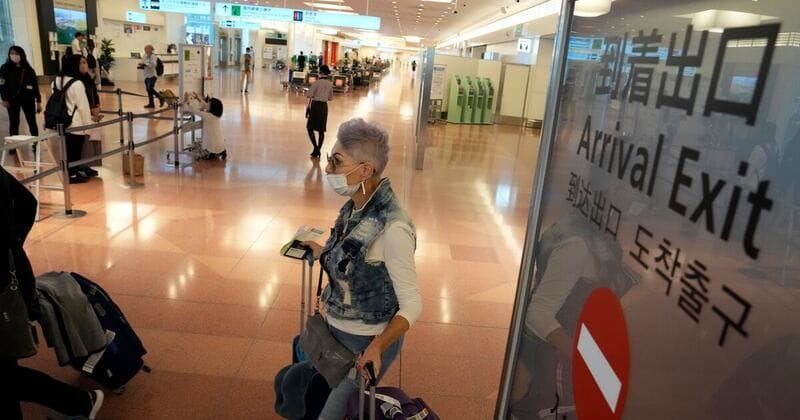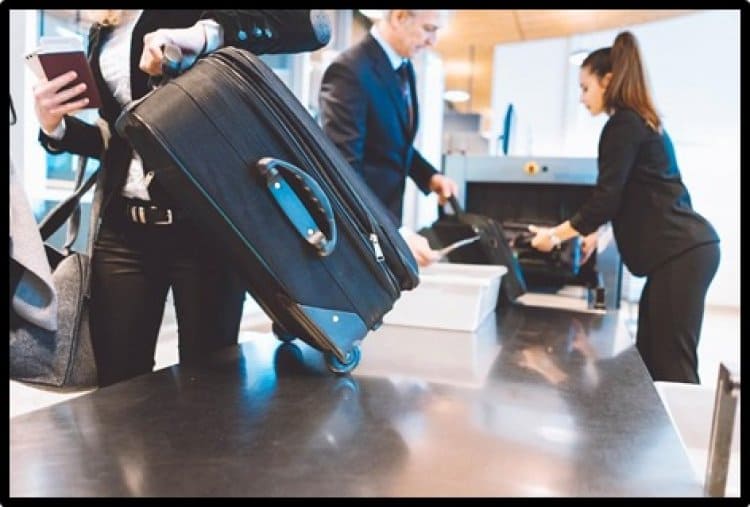
Japan’s borders are carefully managed to to keep residents and visitors safe. If you prepare for your trip well in advance, Japan’s customs and immigration procedures can be straightforward.
This guide covers everything you need to know about crossing Japan’s air, land, and sea borders. You’ll find information on entry requirements, mandatory documents like the Japan CD, and other important details about border controls.
Japan’s Internal and External Border Control Policies
Japan has interior borders (between different Japanese regions and islands) and exterior borders (with other countries). The entry and exit processes are different depending on what type of border you’re crossing.
Internal borders in Japan
When you cross a border between Japan's regions and islands, there are no immigration checks.
In rare cases, temporary controls are added to interior borders for public health concerns or national security threats.
External borders in Japan
Japan does not have any land borders with other countries. All of its international borders are maritime. The East Sea, Sea of Okhotsk and East China Sea separate Japan from Russia, South Korea, China, and Taiwan.
When you’re taking a plane or ferry to leave Japan, you must pass through an official border control point.
Air Border Crossings in Japan
Airports are the most popular entry points for international travelers to Japan. All air passengers have to pass through customs and immigration procedures on arrival or exit.
Most international flights to Japan land at one of its major airports, including:
- Narita International Airport (NRT), Tokyo
- Haneda Airport (HND), Tokyo
- Kansai International Airport (KIX), Osaka
- Chubu Centrair International Airport (NGO), Nagoya
- New Chitose Airport (CTS), Sapporo, Hokkaido
- Fukuoka Airport (FUK), Fukuoka
- Naha Airport (OKA), Okinawa
How To Access Japanese Air Border Control
When you arrive, you’ll pass through immigration before collecting your luggage. Foreign travelers are generally processed together, with a separate line for Japanese citizens.
Preventive Measures When Entering Japan by Air
Airports have security checks for all passengers. It’s essential that you follow all instructions from border officials and security staff.
Documentation Checks at Japanese Airports
To travel to Japan, you need the following documents:
- Valid passport
- Japan arrival card
- Completed Customs Declaration
- Visa (if required)
Border officials at the immigration checkpoint inspect your documentation and may ask questions to check that you meet Japan’s entry requirements.
Make sure you have all of your documents ready for review. Depending on the information on your Customs Declaration, your luggage may also be inspected. Random travelers are also sometimes selected for extra security checks.
Sea Border Controls in Japan
Sea travel by cruise ship or ferry is a common way to reach Japan. Your ship may dock at ports like Yokohama, Kobe, and Fukuoka. Each port has its own customs facilities.
Accessing Japanese sea border controls
When you arrive, you pass through the port’s customs and border controls. The process is usually similar to airport arrival procedures.
All passengers must go through customs and immigration checks. Cruise terminals have designated areas for document review, security screenings, and baggage inspections.
Preventive measures at sea borders
Japanese customs officers run random inspections to check for banned or undeclared goods. This helps to prevent smuggling and ensures travelers are following importation rules.
Sea crossing documentation and controls
You must have your passport and visa, if required, ready for inspection when you arrive in Japan by sea. You may also need to complete a Customs Declaration and arrival card.
All types of baggage may be inspected. Your luggage may be flagged for closer examination based on your travel history or declared goods.
Ferry Border Crossings in Japan
Ferry services connecting the islands of Hokkaido, Honshu, Shikoku, and Kyushu do not have customs controls. Even when traveling from island to island, you remain inside Japan’s borders.
Access and controls at internal borders
To cross a border from one region or island of Japan to another, you do not have to pass through immigration controls.
Japanese authorities may add temporary controls at these checkpoints in public health or security emergencies.
Internal borders documentation and controls
You usually do not need to show any documents when moving between Japan’s islands. However, Japanese police may ask you to identify yourself at any time. Foreign travelers should carry ID or their passport with them.
What Do Security Officers Inspect at Japan’s Borders?
All the items you bring into Japan may be inspected, including things you’re carrying in your pockets and in your luggage. Controls for tax and duty rules may cover:
Japanese Immigration Forms and Where to Complete them
All foreign travelers need to complete the Japanese Customs Declaration and arrival card.
Japan Customs Declaration (CD)
You can fill in this form online in just a few minutes using our simple CD application platform. Customs officers will then check your completed form on arrival.
Japan arrival card
You can complete your arrival card online at any time before you travel. It asks questions about your trip itinerary and your reason for visiting.



